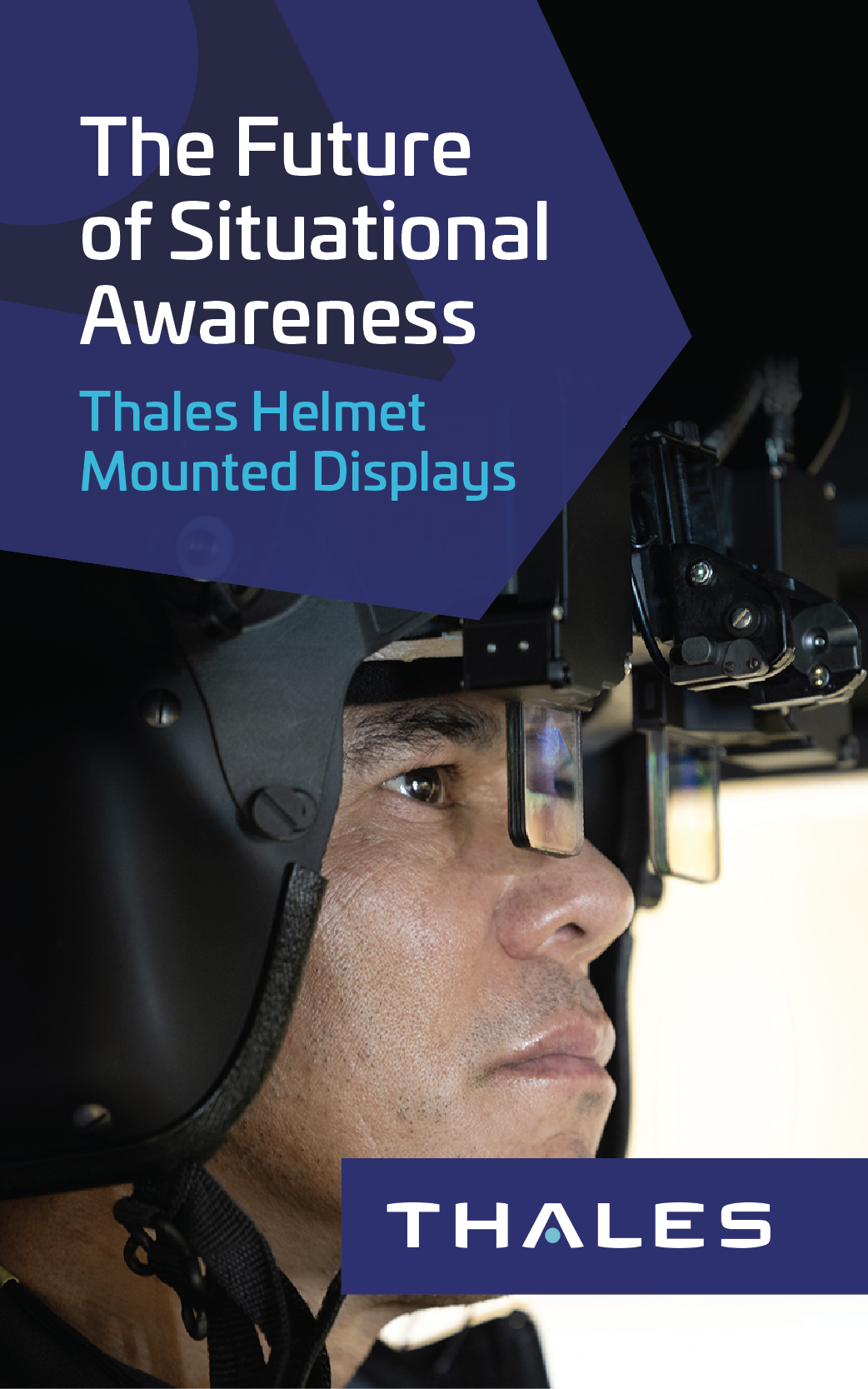Looking Back, August 2024
By Mark Albertson
71st Anniversary of Army Aviation
50 Years Ago: 11th Air Assault Division (Test)

This month’s Looking Back is from the February 28, 2013 issue of Army Aviation.[1] It is rewritten as an extended version.
* * * * *
If we are successful, the Air Mobile Concept will be a dynamic advance for the Army.If we are not, we will go back to flying Piper Cubs.If we have that much left, and the Army and the country as a whole will lose one of the things that . . . can mean the difference between victory and defeat in future land combat. Colonel George P. “Phip” Seneff, Jr., 11th Aviation Group, 11th Air Assault Division (Test).[2]
* * * * *
On August 20, 1962, the Army’s Tactical Mobility Requirements Board, AKA the Howze Board, released its findings on what would come to be known as the Airmobility Concept.These findings were based on computer wargame simulations[3] and actual field exercises.[4]And the vehicle of choice to carry forward the concept . . . the helicopter.[5]And the living embodiment of the criteria set forth by the Howze Board . . . the 11th Air Assault Division (Test).

Lieutenant General Hamilton H. Howze urged the conversion of the 82nd Airborne into the air assault division projected by his committee.He was overruled by Secretary of Defense Robert McNamara, who instead authorized an expansion in Army personnel for fiscal year 1964, from 960,000 to 975,000.
This would enable the new unit to be organized from scratch.And the order for such a force came down on January 7, 1963. And the 11th Air Assault Division (Test) was activated at Fort Benning, Georgia on February 15, 1963, Brigadier Harry W.O. Kinnard in command.[6]

11th Air Assault Division (Test) has its unit roots in the 11th Airborne Division.The “Angels” were activated on February 25, 1943, seeing action in the Philippines at Leyte and Luzon.
With the cessation of hostilities, the 11th Airborne landed in Japan as part of the post-war army of occupation of the Home Islands. The “Angels” were deactivated on June 30, 1958; reactivated briefly on February 1, 1963, then re-designated 11th Air Assault Division (Test) on the 15th.
Among those units attached to the 11th AAD early on were those of the 3rd Battalion from the 187th Infantry Regiment.It “immediately began a series of training exercises to test new concepts and identify new tactical methods.The battalion was fortunate in that the battalion commander, Lieutenant Colonel J.J. Hennessey, had participated in the limited unit tests of the Howze Board while he was stationed at Fort Bragg.[7]
Hennessey’s battalion began their training in April 1963, with the division having been joined by an aviation battalion, the 227th Assault Helicopter Battalion.The battalion initially focused at the platoon level, gradually increasing in scope and size through the battalion level.[8]
In addition to the activation of the 11th AAD, a logistics support unit was organized in the name of the 10th Air Transport Brigade.[9]
Training focus was on air assault; drilling infantrymen on the new concepts of joining combat and engaging the enemy.Provisional supply bases of fuel and stores were made available and organized to keep pace with helicopter units on a fluid battlefield.
Hence the idea of FARP or the Forward Arming and Re-Fueling Point.[10]

Another innovation was artillery fire support for the landing zones.This included rocket-firing helicopters to support attacks by air-assault troops; bolstered, in part, by experience gleaned from Army Aviation support of the Army of the Republic of Vietnam (ARVN) units in Southeast Asia.[11]
In September 1963, Air Assault I exercises at Fort Stewart in Georgia, saw the Airmobility Concept put through its paces on the battalion level of operations.The following year, October 1964, Air Assault II was conducted and by comparison, an exercise on a far grander scale.
Air Assault II sprawled across two states, the Carolinas, taking in some 4,000,000 acres.Thirty-five thousand troops were committed, with the 11th AAD squaring off against the 82nd Airborne Division; the latter engaged in the role of an enemy conventional force as well as that of insurgent opposition.
The first four weeks slated for the exercise was conducted during a hurricane, Isabel.Flying conditions were abysmal; a swirling vortex of wind, rain and fog, leaving many aviators peering through windscreens opaque as a bucket of mud.
Yet 120 helicopters managed to shuttle an infantry brigade 100 miles through the ire of Mother Nature.
General Kinnard summed up the results of the Air Assault thus:
Beyond what I believe to be its capabilities to perform roles normal to other divisions, I am even more impressed by what I feel is its ability to perform in unique ways beyond the abilities of other divisions.
For example, in a low-scale war, I believe it can exert control over a much wider area and with much more speed and flexibility and with much less concern for the problems of interdicted ground communications or of difficult terrain.
In higher scales of war, I see this division an unparalleled reserve or screening force capable of operating over very large frontages.
By properly picking times, places and methods, I believe it can also operate with devastating effect against the rear of the enemy.
Faced with the threat or use of nuclear weapons, I believe it can widely disperse and yet, when required, quickly mass (even over irradiated ground, blown down forests or rubbled cities), strike an enemy, then disperse again.[12]
Kinnard’s men would have a chance to showcase their training in Southeast Asia.Up to 1965, airmobility consisted, for the most part, of Army aviators ferrying South Vietnamese troops into action against the Viet Cong.
But Hanoi was raising the ante.With the Gulf of Tonkin incident, it was certain as sunrise that first string American assault troops would be coming off the bench to spell ARVN’s second eleven.
On July 1, 1965, 11th Air Assault Division (Test) was re-flagged as the 1st Cavalry Division (Airmobile) and twenty-seven days later, later President Johnson ordered the airmobile division to Vietnam.[13]
In November, at Ia Drang, 1st Cavalry air assault forces took their peacetime training into action against North Vietnamese regulars, decisively defeating same in a game-changing demonstration of mobility not seen since Hitler’s panzers steamrollered Poland in September 1939.
A point worthy of remark here is the freshness of American troops, most of who went into action for the first time and against a tough and wily opponent.They came away with a victory, as opposed to similar initial efforts by American troops at places like Bull Run 1861, Kasserine in North Africa 1942 and Osan with Task Force Smith in Korea, 1950.
Despite the fact there was still much to learn, the transition of peacetime development to wartime employment of airmobility seemed on its way.
The advent of the 11th Air Assault Division (Test) was an important step in the evolution of airmobility.But more than that, it was the attestation of a factor that was not only a prerequisite, but without which the effort of Howze, Williams, Kinnard and Seneff would have come to naught.And that factor was that everyone was basically on the same page—from Secretary of Defense, Robert McNamara to Secretary of the Army Elvis Stahr, to General Howze, to General Kinnard and so on down the food chain.Minus this, victory at Ia Drang would not have been possible.
Endnotes
[1]See pages 46-48, “50 Years Ago:11th Air Assault Division {Test},” Army Aviation, by Mark Albertson, February 28, 2013.
[2]See page 30, The Air Close to the Trees:Evolution and Innovation in U.S. Army Assault Helicopter Units During the Vietnam War, by Adam Thomas Givens,
[3]Computer wargame models for the Howze Board were conducted by Research Analysis Corporation and Technical Operations Incorporated.
[4]Four battle models were chosen to challenge Airmobility:A Warsaw Pact attack on Western Europe; versus Chinese Communist Forces in Asia (obviously the stalemate of the Korean War was still fresh); and, that of blunting threats to Africa as well as Central and South America.
[5]The Army’s attempt to base airmobility on the helicopter during the 1960s was not too unlike the transition of mobility from the horse to the truck and tank during the 1920s and ‘30s.
However an important factor to keep in mind here was that the United States was not the only power wrestling with mobility during the years leading up to the Second World War, sharing the stage with such kibitzers as the Soviet Union, Nazi Germany, Britain, France, . . .Yet during the 1960s, American practitioners virtually wrote the book.
[6]General Kinnard was among those of the 101st Airborne Division who were encircled by General Baron Hasso von Manteuffel’s Fifth Panzer Army at Bastogne.He is popularly known to have urged General Anthony McAuliffe to respond to German entreaties for surrender with the eloquent yet steadfast rejection of “Nuts!”
[7]See page 13, “D Training LOMS,” Transforming the Force:The 11th AirAssault Division (Test), From 1963-1965, by Major Thomas C. Graves, USA.
[8]According to Major Thomas I. McMurray and Major Larry E. Scoggins in the History of the 227th for the Year of 1965, on February 11, 1963, “the 31st Transportation Company (Light Helicopter) was re-designated and activated as Company B, 227th Assault Helicopter Battalion, and brought to the battalion its twenty-two CH-34 helicopters.”Page 2, McMurray & Scoggins.“On February 15, 1963, Company A, 227th Assault Helicopter Battalion was activated as the second of the battalion’s units.Company A was designated the aerial weapons armed escort company; their UH-1Bs and armament systems arriving in late April 1963.”Page 2, Major McMurray & Major Scoggins.
[9]The 10th Air TransportBrigade was not organic to the 11th AAD; rather, a unit of logistics support.
[10]See page 20, Forward Arming and Refueling Points for Mechanized Infantry and Armor Units, Chapter 2, “Review of Literature,” by Captain Jarrold M. Reeves, Jr., USA.“The Vietnam War and its heavy reliance on the helicopter led to the FARE (Forward Area Refueling Equipment) study and caused the research and development of the Forward Area Refueling Point for helicopters, but also for ground equipment.The culmination of the original plan of action was the development of the Forward Arming and Refueling Point Doctrine explained in FM 1-104, Forward Arming and Refueling Points, published in 1985.”See page 3, Captain Jarrold M. Reeves, Jr.
[11] The use of rocket-firing UH-1s in support of air assault units at landing zones was much like the Luftwaffe’s employment of the Junkers Ju-87 dive bomber to support panzer units at the point of the Wehrmacht’s armored thrusts.
[12]The blackened portion of General Kinnard’s observations underlines the ambidextrous nature of airmobility, where the pliability of the concept allows air assault forces to operate as either regular or irregular troops.
General Kinnard’s affirmation, then, coincides with the following practitioners of regular and irregular warfare:“When the situation is serious, the guerrillas must move with the fluidity of water and the ease of blowing wind.Their tactics must deceive, tempt and confuse the enemy.They must lead the enemy to believe that they will attack him from the east and north, and they must then strike him from the west and south.
Guerrilla initiative is expressed in dispersion, concentration and the alert shifting of forces.”See pages 103 and 104, Mao Tse-tung, On Guerrilla Warfare. Translated by Brigadier General Samuel B. Griffith, USMC (Ret.).
“Throughout the Resistance War . . . our strategic line was to extend guerrilla warfare everywhere . . . we chose the positions where the enemy is weak to concentrate our forces there and annihilate his manpower.” See page 139, People’s War, People’s Army, by General Vo Nguyen Giap.
“When the enemy is at ease, be able to weary him; when well fed, to starve him; when at rest, to make him move; appear at places to which he must hasten; move swiftly where he does not expect you.”See page 96, The Art of War, by Sun Tzu, translated by Brigadier General Samuel B. Griffith, USMC (Ret.).
[13]See page 16, Lieutenant General Harold G. Moore (Ret.) and Joseph L. Galloway, We Were Soldiers Once . . . And Young.
Bibliography
Albertson, Mark, “50 Years Ago:11th Air Assault Division (Test), Army Aviation, Vol. 62, No. 2, Army Aviation Publications, Inc., Monroe, Ct., February 28, 2013.
Giap, General Vo Nguyen, People’s War, People’s Army: The Viet Cong Insurrection Manual for Underdeveloped Countries, A Bantum Book, Published by Frederick A. Praeger, Inc., New York, NY., 1962.
Graves, Major Thomas C., United States Army, School of Advanced Military Studies, U.S. Army Command and General Staff College, Fort Leavenworth, Kansas, 2000
Howze, Hamilton H., A Cavalryman’s Story:Memoirs of a Twentieth-Century General, Smithsonian Institution Press, Washington and London, 1990.
Mao Tse-Tung, On Guerrilla Warfare, Translated by Brigadier General Samuel B. Griffith, USMNC (Ret.), Praeger Publishers, Inc., New York, NY., 1961.
McMurray, Major Thomas I. and Scoggins, Major Larry E., “Company A, 227th Assault Helicopter Battalion, 1st Cavalry Division (Airmobile),” Reprinted from an in-country document titled, “History of the 227th for the Year 1965,” and approved by Lieutenant Colonel Jack Cranford, Commanding.A227ahb.org/History227th1965.html
Moore, Lieutenant General Harold G., (Ret.) and Galloway, Joseph L., We Were Soldiers Once . . . And Young:Ia Drang—the Battle That Changed the War in Vietnam, a Presidio Press Book, Published by The Random House Publishing Group, Inc., New York, 1992.
Reeves, Captain Jarrold M., Jr., USA, “Forward Army and Refueling Points for Mechanized Infantry and Armor Units,” U.S. Army Command and General Staff College, Fort Leavenworth, Kansas, June 1993.
Tzu, Sun, The Art of War, Translated by Samuel B. Griffith, Oxford University Press, New York and Oxford, 1963.
Williams, Dr. James W., A History of Army Aviation:From its Beginnings to the War on Terror, iUniverse, Inc., Lincoln, Nebraska, 2005.
























